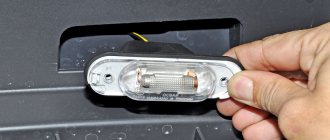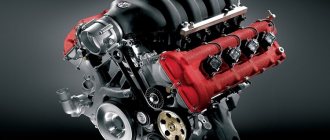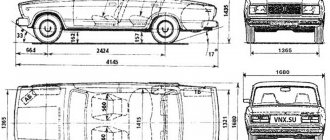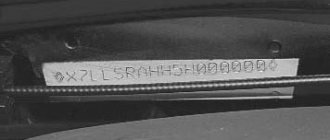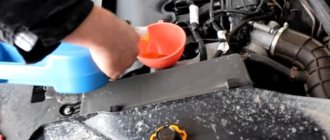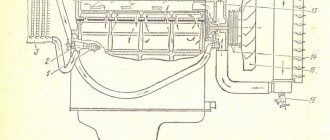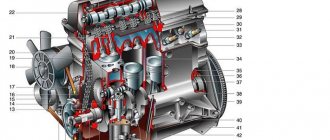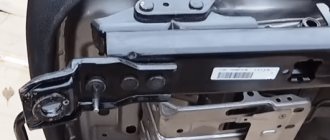Almost all parts and components of a car can be replaced relatively easily if necessary, even if we are talking, for example, about an engine and transmission. But what to do if a body part becomes unusable? There are fewer problems with the hood and doors, but how to replace the pillars or the bottom? But they are the ones who are most exposed to external factors: moisture, dirt, stone impacts. If a corrosion center has formed on the body, if you let the process take its course for a while, it will be extremely difficult to stop the spread of rust. Therefore, it is so important to provide comprehensive body protection, especially in those places that are not covered with factory paint. However, the paint coating cannot be called reliable protection against corrosion: a small scratch or an unnoticeable chip is enough for water, in contact with air and the metal surface, to lead to its oxidation.
There is a solution to the problem - coating body parts with a thin layer of zinc. Galvanization, performed in a factory, is considered the highest quality and most reliable protective agent against corrosion processes. You don’t have to look far for an example - the famous Audi, produced in the late 80s, that is, about thirty years ago, today will give a head start to much younger competitors when it comes to the condition of the body. Even though they have practically no components left that have not been restored or replaced, you can be sure that during all this time no body repairs have been carried out on such cars. So if you are planning to purchase a new or used car, you should ask in advance whether the body of this model is factory galvanized. It is this topic that we intend to examine with the utmost care.
Automotive galvanizing methods
For a polished but untreated steel structure, one rain is enough to start the oxidation process of the metal. The presence of several layers of paint and varnish will protect the surface from moisture, but who will protect the paintwork itself? With the lack of free space in modern cities, finding a car with an unscratched body is not an easy task. But even a small but deep scratch is enough for rust to appear in this place, spreading to nearby areas.
Therefore, metal surfaces exposed to active environmental influences are in dire need of additional processing. There are many methods for creating such a protective layer, but galvanizing is considered one of the most effective and affordable. It is the zinc-containing coating that provides the car body with optimal protective properties in most respects. Proof that cars with galvanized bodies suffer much less from metal oxidation is an increased warranty, the period of which for such cars can range from 6 to 25-30 years.
There are 6-7 methods of applying zinc coating to a steel surface, but only three of them are used in the automotive industry:
- hot galvanizing method;
- galvanic treatment of the vehicle body;
- cold galvanized.
Note that the latter method is used mainly in artisanal conditions. Automotive manufacturers prefer galvanization and hot-dip galvanizing, while the thermal method is considered more preferable in terms of reliability, quality and durability of the coating for the following reasons:
- with the hot processing method, the metal’s resistance to corrosion processes remains for a longer time (15 years or more, the thicker the zinc layer, the greater this indicator);
- it has been proven that the oxidation resistance of galvanized coating using heat treatment is approximately four times higher than that of the galvanic method;
- A hot-dip galvanized car body is much more resistant to various mechanical influences, maintaining this property throughout its entire service life;
- Such a protective zinc-containing coating is capable of regenerating (restoring) in local areas.
This means that a galvanized body is characterized by lower corrosion resistance. But if we talk about cold galvanizing, then this method is even less reliable and in most cases its indication in the technical characteristics of the car is purely for marketing purposes. It is believed that the zinc contained in the primer layer weakly protects the metal from oxidation in case of deep damage to the paint.
And in general, many automakers are lying when they report a galvanized body. In fact, it is important to know which method was used, since the anti-corrosion properties of body parts depend on this. In this case, only those parts of the body that are most susceptible to mechanical stress and therefore suffer from corrosion in the first place can be galvanized.
If you want to purchase a fully galvanized car , focus specifically on the word “full” - if it is not in the description, you can rest assured that we are talking only about partial anti-corrosion treatment.
The main causes of corrosion
Among the reasons for the appearance of rust on the body and underbody of a car, the following unfavorable factors can be identified:
- Territorial use of the car. In other words, the region and its climate. Sudden changes in temperature, UV rays, and air humidity have an adverse effect on your iron horse.
- Reagents on the roads. In winter, in large cities, road services treat roads with a sand-salt mixture, which helps get rid of ice, but at the same time can cause serious damage to external metal parts and the body.
- Poor quality painting, unscrupulous repair work, chips and damage to the paintwork of the vehicle.
- Inadequate care.
Hot galvanized vehicles
Since the method of galvanizing metal surfaces using the hot method is quite complex and requires the use of expensive equipment, it has a significant impact on the final cost of the car, and this fact must be taken into account. Few automakers are concerned enough about the anti-corrosion properties of their products to use this technology. Therefore, the list of cars with a hot-dip galvanized body is not so long. First of all, it is worth noting the cars of the VW Group, which has been using this technology for almost three decades. These are cars of the following brands:
- Porsche;
- VW;
- Audi;
- Skoda;
- Seat.
Which cars have a galvanized body and how is the coating applied?
The manufacturer gives modern cars with a galvanized body a very impressive warranty period - from 5-6 to 30 years. The number of zinc coating methods actively used in the automotive industry is 3:
- hot galvanizing;
- galvanic galvanization;
- cold galvanizing.
From the point of view of operational characteristics, thermal galvanizing technology is more preferable: The technology of applying a protective coating using the hot-dip galvanizing method is difficult to implement and requires large capital investments.
This technique is actively used by the VW Group on all brands of cars owned by it:
Literally all cars with a body galvanized using first-class technology demonstrate excellent resistance to the occurrence of corrosion spots during aggressive tests in a salt chamber. Answering the question of which cars have a hot-dip galvanized body, you can also give the following examples:
- high-alloy steel with minimal inclusion of harmful impurities;
- a layer of zinc 9 – 15 microns thick, applied by galvanic method;
- a thick layer of paint applied to a perfectly flat surface with good adhesion.
Galvanized car
The main advantage of this technology over thermal processing methods is lower cost, so this method has become more widespread, and the list of car brands with galvanized bodies is much wider. It is most often used by Japanese and North American automakers, although it is also found in the Old World. Note that due to the lower efficiency of such coating, some European brands (we are talking about such giants as BMW and Mercedes) are working hard to improve the galvanic galvanizing method, using the following techniques to increase the anti-corrosion characteristics of their cars:
- For the manufacture of body parts, only high-alloy steel is used, characterized by a minimum content of impurities;
- provide a fairly thick layer of zinc (within 9-15 microns);
- treat the metal surface with a thick layer of primer and paintwork over zinc, using the improved adhesive properties of galvanized surfaces.
If we talk about the products of the Japanese automobile industry, then the quality of galvanizing is inferior to European ones, since local automakers began to use galvanizing much later than their European colleagues. Toyota cars deserve the most attention, which today have a fairly thick layer of zinc on all parts exposed to corrosion.
Now let’s look at which car bodies are galvanized using galvanic technology:
- Alfa Romeo (models that came off the assembly line after 1993);
- Mercedes W124/W201;
- Audi A4;
- Lexus;
- Mitsubishi (Lancer 9);
- Volkswagen (all models starting from 2000);
- Toyota (since 1991);
- Skoda (Fabia/Octavia models);
- Honda (Legend model only);
- Peugeot;
- Renault (Espace 3, Logan);
- Chrysler (model 300M).
Galvanized cars of domestic production
If we talk about the domestic automobile industry, then the situation with galvanizing the body is much worse. Previously, AvtoVAZ products were made from finished steel billets supplied from abroad. Some examples may indeed have been assembled from galvanized steel, but certainly not in large numbers. But even without anti-corrosion treatment, the cost of cars made from imported steel was too high, so AvtoVAZ employees switched to using local steel. Many body parts are galvanized, but this uses a cold process, which provides the least protection possible. In addition, this method involves galvanizing individual parts, and not the entire body, so we are not talking about complete protection.
Some components and parts are subjected to anti-corrosion treatment using the cataphoresis method without the use of zinc. Accurate information about the presence/absence of a galvanized layer on domestically produced cars is quite difficult to find. In relation to AvtoVAZ products, the list of models with a galvanized body is as follows:
- VAZ 2110 (about 30% of parts are galvanized);
- Lada 4x4 – only cataphoretic primer, no galvanized surfaces;
- Kalina (first generation - 52%, second - full galvanized, with the exception of the roof, side members and hood);
- Priora (29% since 2008, 100% since 2009);
- Granta (liftback – wings and doors are galvanized, sedan – without galvanization);
- Vesta – completely galvanized, except for the bottom/sills (the sedan’s roof is also not treated);
- XRAY – fully galvanized, except for the roof.
Pros and cons of galvanizing methods
Each of the described methods of applying zinc protection has its own pros and cons.
- Hot-dip galvanizing provides excellent protection, but an even layer cannot be achieved. Also, the color of the coating is gray and matte. You can see zinc crystals.
- The galvanic processing method protects a little less well, but the part turns out shiny and smooth. It is also beneficial from an economic point of view.
- The only advantage of the cold processing method is that it is cheap, but this is only good for manufacturers, although it allows the price of the car to be reduced.
How to find out whether a car is galvanized or not
So, if you want to own a car with a galvanized body and are willing to pay a little extra for it, you will need an accurate way to find out whether a particular model has been subjected to such treatment. Moreover, this is true for both new and used cars (in the second case it is even more significant). Unfortunately, we would not recommend taking the word of sellers, even if they are representatives of a well-known brand car dealership. The first thing you need to do is look at the technical characteristics of the machine. If you haven’t come across the word “galvanization”, you can say with confidence that there is practically no anti-corrosion protection for body parts. But even otherwise you need to be careful. Only the presence of the phrase “full galvanization” suggests that the entire body was processed, and not its individual elements.
Partial galvanization is practiced much more often; most models produced today have just such incomplete protection of the body from moisture. The lower the cost of a car with the same equipment, the worse its ability to resist oxidation - galvanizing, priming and paintwork on budget cars is carried out using the most affordable materials and technologies. Economy class models from Asian automakers are especially guilty of this. Unfortunately, it is not possible to independently determine whether the body is galvanized or not. To do this, you need to use a fairly expensive technique, which even many large service centers cannot afford. You can subject the car to galvanization testing, but its cost may be so high that there will be little point in this step.
From the above material, it can be assumed that the bodies of many European, Asian and American-made cars are processed using the galvanic method. Thermal technology is less common, but recently, thanks to the efforts of German manufacturers, the cost of such galvanizing has been steadily decreasing, approaching the cost of the galvanic method. Note that we did not mention another method of applying zinc to a steel surface. Zinc metal technology does not have good tread properties, so few manufacturers use it - in particular, the Korean company Kia.
When purchasing a new car, among other documents, you receive a warranty card, which states the warranty period against through corrosion of the car body. We advise you to treat this piece of paper with special attention - if body defects appear during the warranty period, you can save a considerable amount of money on restoring the integrity of the body part damaged due to poor processing, and in some cases you can even replace the defective car with another.
Summarizing the above, we note that the main source of information about body galvanization is the technical documentation for a specific model, as well as the availability of an appropriate warranty. Technical verification methods exist, but they are complex, expensive and therefore cannot be ordered everywhere. We also note that you should not trust advertising materials - the level of marketing today is very high, and manufacturers resort to numerous tricks, citing facts that turn out to be only partial truth, or even completely misinformation.
